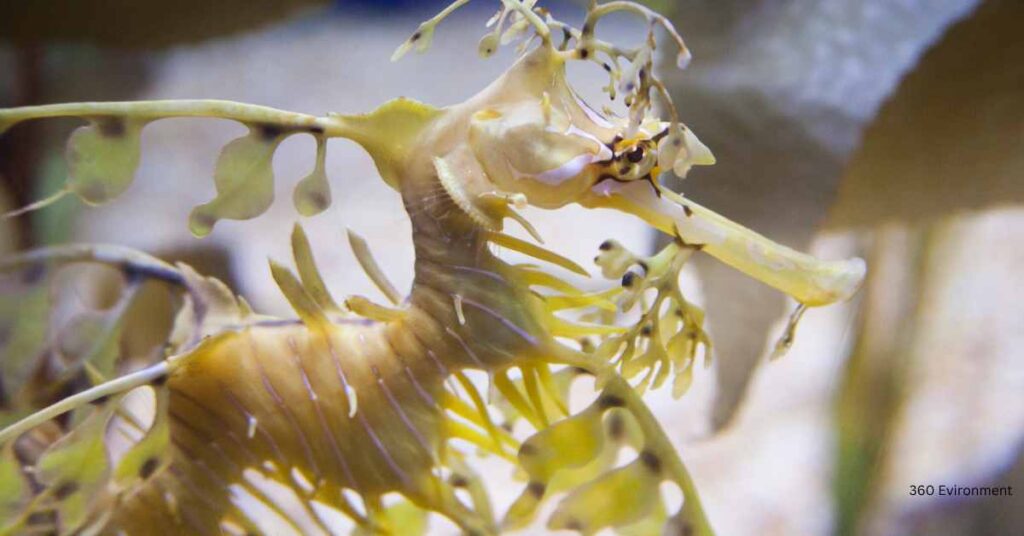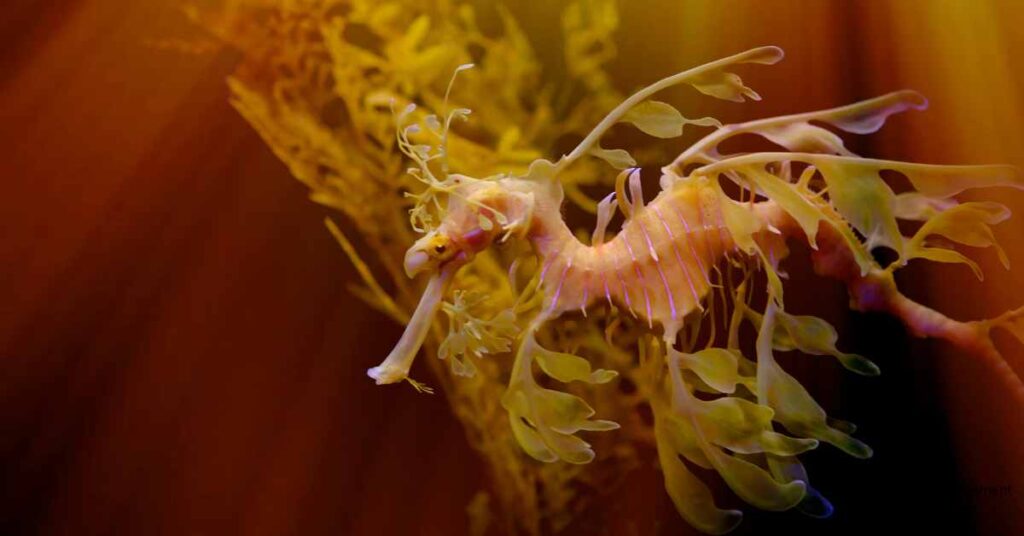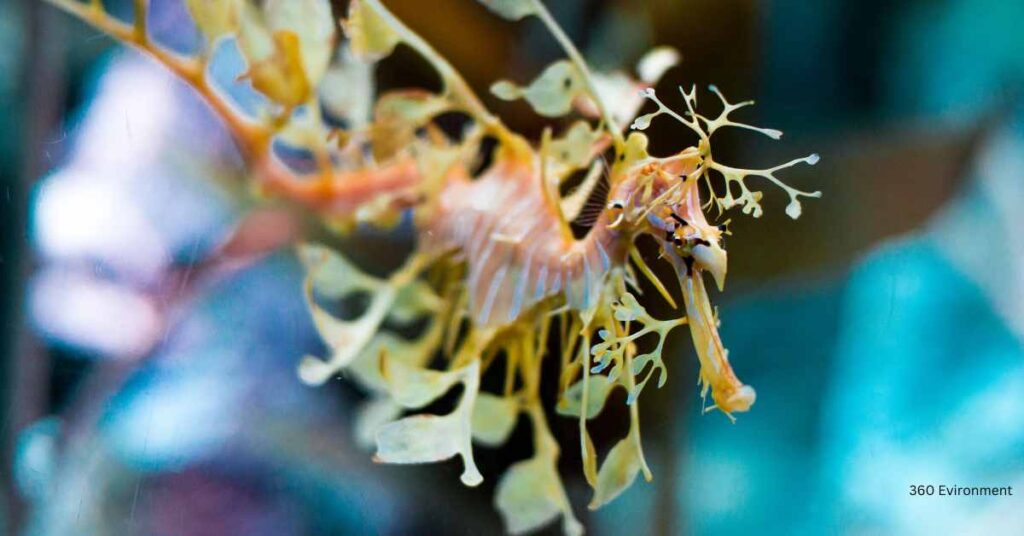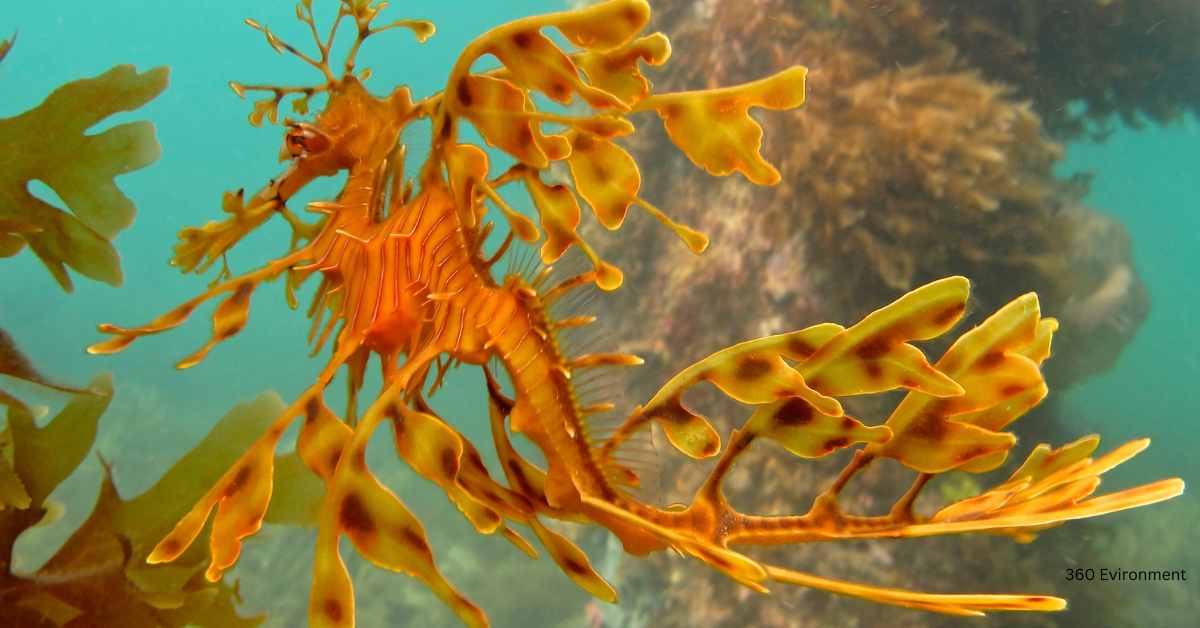Introduction
The ocean holds a treasure trove of unique and fascinating species, and among these is the “ocean dragon,” a term often used to describe the extraordinary leafy sea dragon (Phycodurus eques). With its leaf-like appendages and dragon-like appearance, this marine creature is one of the most visually stunning animals in the sea. Found along the southern coast of Australia, the leafy sea dragon belongs to the same family as seahorses and pipefish, yet stands out due to its intricate camouflage, gentle movement, and critical role in marine ecosystems.
This article will dive deep into the life of the leafy sea dragon, explore its habitat, behavior, and role in maintaining marine biodiversity, and examine the broader environmental significance of this “ocean dragon.” Through understanding this species, we can appreciate the importance of marine conservation efforts that help protect these remarkable creatures and the ecosystems they inhabit.
The Leafy Sea Dragon: An Introduction to the “Ocean Dragon”

1. Physical Characteristics
The leafy sea dragon is named for its striking appearance, which includes long, leaf-like appendages that protrude from its body. These appendages serve no functional purpose in movement but act as camouflage, allowing the leafy sea dragon to blend seamlessly into seaweed and kelp forests. This natural disguise protects the dragon from predators in its environment.
Measuring around 20-30 centimeters in length, the leafy sea dragon’s body is elongated, similar to that of a seahorse, with a series of small, transparent fins that allow for slow, graceful movement through the water. Unlike most fish, the leafy sea dragon does not rely on rapid movements to escape danger. Instead, it uses stealth and its natural camouflage to avoid detection.
Key Physical Traits:
- Leaf-like appendages for camouflage
- Transparent fins for slow, deliberate movement
- Long, slender body that resembles kelp and seaweed
2. Habitat and Distribution
The leafy sea dragon is endemic to the southern and western coasts of Australia, specifically found in areas with abundant seagrass, seaweed, and kelp forests. These marine habitats provide the perfect environment for the leafy sea dragon to hide from predators and hunt small prey, such as plankton, shrimp, and other tiny crustaceans.
Preferred Habitats:
- Shallow waters (up to 50 meters deep)
- Seagrass beds and kelp forests
- Rocky reefs and coral ecosystems
The southern Australian coastline is known for its rich marine biodiversity, and the leafy sea dragon plays a crucial role in maintaining the balance of these ecosystems.
Ecological Role of the Leafy Sea Dragon

1. Predator and Prey Interactions
The leafy sea dragon plays an important role in the food chain of its marine ecosystem. As a predator, it feeds on small organisms like mysid shrimp, plankton, and other micro-crustaceans, helping regulate their populations. Though the leafy sea dragon may seem vulnerable due to its slow movement, its camouflage protects it from becoming prey for larger fish, such as snapper and other predatory species.
By maintaining balance in the population of small crustaceans, the leafy sea dragon contributes to the overall health of the seagrass and kelp ecosystems. If populations of these smaller organisms were left unchecked, they could potentially overgraze on algae and other foundational species, leading to ecosystem degradation.
2. Importance in Marine Biodiversity
The leafy sea dragon, often referred to as an “ocean dragon,” symbolizes the intricate connections within marine ecosystems. Seagrass beds and kelp forests serve as critical habitats for many species, providing shelter, feeding grounds, and nursery areas for juvenile fish. As a part of these ecosystems, the leafy sea dragon helps maintain biodiversity by interacting with other species and participating in the natural nutrient cycles.
Marine biodiversity is essential for the health and resilience of the oceans. Species like the leafy sea dragon act as indicators of environmental stability—when their populations thrive, it is often a sign that the ecosystem is healthy and functioning properly. On the other hand, declining populations of such species can indicate disruptions in the ecosystem, such as pollution or habitat loss.
Conservation Challenges Facing the Ocean Dragon

1. Habitat Destruction
One of the primary threats to the leafy sea dragon is habitat destruction. Coastal development, pollution, and destructive fishing practices have led to the degradation of seagrass beds and kelp forests, which are critical to the survival of the leafy sea dragon. As human activities encroach upon these habitats, leafy sea dragons lose their primary source of food and shelter.
The destruction of these habitats can also result in reduced water quality, which affects the leafy sea dragon’s ability to breathe and hunt. Pollution from agricultural runoff, industrial waste, and plastic debris further endangers these marine habitats, making them less hospitable for delicate species like the leafy sea dragon.
2. Climate Change and Ocean Warming
Climate change poses another significant threat to the leafy sea dragon and its marine environment. Rising ocean temperatures have already led to the loss of kelp forests in some parts of the world, as warmer waters create unfavorable conditions for kelp growth. This, in turn, affects the leafy sea dragon, which relies on kelp forests for both shelter and food sources.
Ocean acidification, caused by increased levels of carbon dioxide in the atmosphere, also affects marine life. Acidic waters can weaken the shells of small crustaceans and plankton, reducing the availability of food for the leafy sea dragon. In addition, acidification can harm the structure of coral reefs and other key habitats.
3. Human Disturbance and Overfishing
Human activities such as tourism, boating, and fishing can also pose threats to the leafy sea dragon. In some cases, leafy sea dragons have been collected for the aquarium trade, although they are now protected under Australian law. Overfishing of other species in the same habitats can also disrupt the balance of the ecosystem, indirectly affecting the leafy sea dragon by depleting its food sources.
Boats and divers can inadvertently damage seagrass beds and kelp forests, reducing the available habitat for leafy sea dragons. Additionally, excessive human presence can cause stress to these shy creatures, potentially impacting their reproductive behavior and long-term survival.
Conservation Efforts for Protecting the Leafy Sea Dragon

1. Marine Protected Areas (MPAs)
Marine Protected Areas are a vital tool in conserving the habitats of species like the leafy sea dragon. MPAs are designated areas where human activities, such as fishing and coastal development, are restricted or regulated to protect marine ecosystems. Australia has established several MPAs along its southern coast to safeguard the habitats of the leafy sea dragon and other marine species.
These protected areas allow ecosystems to recover from human impact, providing safe havens for species to thrive. By limiting activities that degrade the environment, MPAs contribute to the long-term health and sustainability of marine biodiversity.
2. Habitat Restoration Projects
Efforts to restore damaged seagrass beds and kelp forests are critical for the survival of the leafy sea dragon. Restoration projects often involve replanting seagrass and kelp in areas where they have been depleted, helping to rebuild ecosystems that have been affected by pollution, climate change, or overfishing.
By improving the health of these marine environments, restoration projects provide leafy sea dragons with more suitable habitats, increasing their chances of survival. These projects also benefit other species that depend on seagrass and kelp ecosystems, creating a ripple effect of positive environmental impact.
3. Public Awareness and Education
Educating the public about the importance of species like the leafy sea dragon and their role in marine ecosystems is essential for conservation. Many people are unaware of the critical environmental functions these “ocean dragons” perform or the threats they face. Public awareness campaigns can encourage responsible tourism, reduce pollution, and promote sustainable fishing practices.
Programs that involve local communities in conservation efforts, such as citizen science projects or beach cleanups, can also make a significant difference in protecting marine species. By engaging the public in conservation, we can build a broader movement to safeguard ocean habitats and the creatures that inhabit them.
The Fascination with Leafy Sea Dragons: Cultural and Ecological Significance

1. Cultural Symbolism
The unique appearance of the leafy sea dragon has inspired fascination and reverence in many cultures. In Australia, where the species is native, it is often viewed as a symbol of marine biodiversity and the need for ocean conservation. The leafy sea dragon’s striking resemblance to mythical dragons adds an element of mystery and intrigue to this already captivating species.
Artists and photographers are particularly drawn to the leafy sea dragon due to its beauty and graceful movement. The species has become a popular subject for underwater photography, raising awareness about its importance and the need to protect its fragile environment.
2. Tourism and Eco-Friendly Diving
The leafy sea dragon has also become an attraction for eco-tourism, particularly among scuba divers and underwater photographers. In regions where leafy sea dragons are known to inhabit, such as South Australia’s Fleurieu Peninsula, dive operators offer eco-friendly tours that allow visitors to observe these creatures in their natural habitat.
Eco-tourism, when done responsibly, can provide economic benefits to local communities while promoting conservation efforts. Tourists who visit to see the leafy sea dragon may be inspired to support marine conservation initiatives and advocate for the protection of ocean habitats.
Conclusion
The “ocean dragon,” better known as the leafy sea dragon, is a fascinating and ecologically significant species that embodies the beauty and complexity of marine ecosystems. From its delicate camouflage to its slow, graceful movements, the leafy sea dragon is a testament to the diversity of life that thrives beneath the ocean’s surface.
However, this species faces numerous threats from habitat destruction, climate change, and human activity. Conservation efforts, such as Marine Protected Areas, habitat restoration projects, and public education, are essential to ensuring the survival of the leafy sea dragon and the ecosystems it calls home.
By understanding and protecting species like the leafy sea dragon, we can contribute to the broader goal of marine conservation and help preserve the health and biodiversity of our oceans for future generations.
Read More: Dolphins Are Evil? Exploring the Complex Behavior of Dolphins in the Wild

